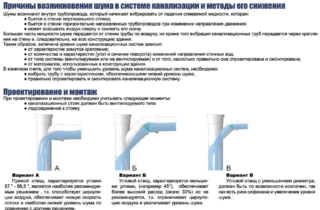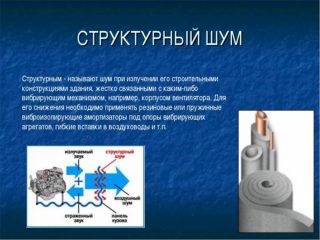Soundproofing a sewer riser is an urgent need, especially if the apartment is located in an old house. Plastic and cast iron pipes emit many sounds that disturb the peace of the residents.
- Causes of noise in the sewer pipes in the apartment
- To what extent to isolate
- Required tools and materials
- The main methods of soundproofing the sewer
- Creating a box
- Winding with additional materials
- Using a closed soundproofing shell
- Elimination of structure-borne noise
- Recommendations for choosing a method of noise isolation
Causes of noise in the sewer pipes in the apartment
- the mobility of the building structure;
- drainage of fecal waters;
- wrong choice of material - thin-walled plastic pipes make more noise than cast iron or thick-walled products;
- resonance in the system connecting the riser and floors;
- insufficient fastening of sewer pipes to building structures;
- excess ventilation of the drain.
Some reasons for the appearance of noise are typical not only for the equipment of sanitary facilities, but also for heating pipes.
To what extent to isolate
Intensity of sound waves of different ranges:
- hearing threshold - 0 dB;
- whisper - from 20 to 30 dB;
- apartment in a quiet area - 50-60 dB;
- metalworking shop - from 70 to 80 dB;
- rock concert - 90-100 dB;
- pain threshold - 130 dB.
When soundproofing a sewer riser in an apartment, the selected material should attenuate the sound by 20-30 dB. The standard value of the degree of noise absorption in residential premises is 26 dB.
Required tools and materials
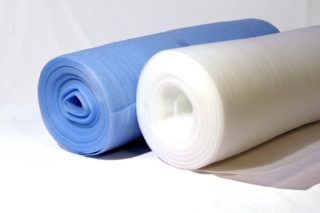
For soundproofing the riser, you will need to prepare tools:
- dowel;
- ruler;
- square;
- pencil;
- moisture resistant plasterboard 13 mm thick;
- 3 profiles from floor to ceiling.
The most common materials used for soundproofing sewer pipes are polyethylene foam and roll products. When buying, it is important to focus on the noise absorption level indicated in the product specifications. The number of decibels that it can absorb is written on the label.
When choosing sound insulation, you should take a closer look at its outer layer. The more rigid it turns out to be, the longer the protection of the pipeline will last without losing its original properties. Polyurethane foam is not suitable for sound absorption as it is not capable of eliminating noise.
To create reliable soundproofing of the sewer pipe, it is enough to contact a car store. You can purchase high quality vibration isolation here. The best option is the modern Vibroplast material 3 mm thick. They are wrapped around plastic pipes, joints and spans. The insulation adheres well to the surface of the polypropylene riser even without the use of a hair dryer. It is better to lay the sheets not end-to-end, but with an overlap, leaving no gaps.
An expensive and effective way of soundproofing the riser is the use of K Fonik material. It consists of two layers of rubber and has a sound absorption index of 26 dB.
The main methods of soundproofing the sewer
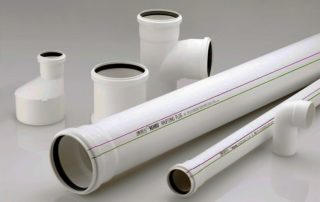
The best pipe insulation is the absorption of various sounds by the product itself. Models are sold that, in addition to plastic, contain mineral powder (microcalcite, consisting of marble powder or flour). Sound absorbing pipes have thick walls and are longitudinally marked with red and green stripes. Their outer layer is made of polyvinyl chloride. Service life exceeds 20 years.
Installation of soundproof pipes includes several stages:
- cut a piece of the drain to size;
- carry out the installation of sealing rings;
- clean the outer and inner surfaces from dirt;
- apply silicone to the end;
- insert the pipe into the socket until it stops, and then push it out of it by 10 mm;
- fix the gutter by attaching it to the wall.
The disadvantage of sound-absorbing pipes is their high cost. However, soundproofing of sewer pipes made of cast iron and plastic is also possible. It is better to separate them from the ceilings with a plastic cup. There should be clamps between the pipe and the walls. They can be replaced with an insert made of foam rubber or a car camera.
Pipe insulation in straight sections is made of polyurethane foam. The material is sold as mats. Fix with tape. The riser is wrapped in a spiral material. The sounds of flowing water with such insulation are practically inaudible.
Creating a box
Soundproofing sewer pipes in a toilet begins with degreasing them. Further stages of work:
- Covering the drain with soil, painting and testing for leaks.
- Plasterboard box installation. On the wall of the bathroom, using a construction plumb line, it is necessary to markup. The pipes should be at a distance of 5-6 cm from vertical surfaces.
- Fixing profiles. Using a self-tapping screw or a dowel, the first element is attached to the wall, and then the second - on an adjacent surface.
- Marking lines on the floor and ceiling using a square. They should be perpendicular to the profiles.
- On the flooring, in the center of the intersection of the lines, a mark is made at the installation site of the extreme profile.
- Starting auxiliary elements are laid on the floor along the drawn lines.
- In the center of the intersection of the lines, a third profile is set. The erected frame is fixed with self-tapping screws for metal with a length of 9.5 mm.
- The arranged structure is reinforced with jumpers, between which an indent of 45-50 cm is made.
- Installation of plasterboard panels. The material must be waterproof. At this stage, a technological hatch must be created in the box, which is necessary for the inspection and repair of the components of the plumbing equipment.
- Soundproofing of the box - performed after sewing on one side. Mineral wool is placed between the pipes and the frame, covering all the free space with it.
- Plasterboard covering of the 2nd side of the box.
- Facing the resulting structure.
Plasterboard installation requires careful planning and accurate calculations, so it is better to enlist the help of an experienced repairman before starting work.
Winding with additional materials
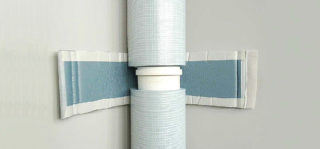
In addition to creating a soundproofing box, it can be achieved by winding the fan pipe with certain materials. In this case, use:
- Scissors.
- 12 sheets of self-adhesive damping material. Each element should be 27x37 cm in size.
- Sound insulating material. Better to choose polyethylene foam.
- Roll-on roller.
It is necessary to wrap the fan pipes in the following sequence:
- Degrease the surface of the product.
- Apply damping material to the entire surface of the tube.
- Roll the material using the roller. At this point, it is important to remove all air bubbles and firmly bond the tube surface to the damping material.
- Install sound insulation by first attaching and cutting the sheet to the size of the tube.
- Glue the cut sheet to the vibration damping material, completing the winding of the fan tubes at this.
The use of wrapping materials allows you to quickly isolate the drain pipe from noise without involving an assistant.
Using a closed soundproofing shell
Soundproofing with a closed shell is arranged according to the "pipe in pipe" principle. The outer casing is a polyethylene pipe. It is cut into easy-to-install sections and a vertical cut is made to put it on the riser.
When creating sound insulation with a closed shell, the outer pipe should be of a larger size. For example, if a cast-iron or polypropylene pipe has a size of 110 mm, then a product of 160x7.7 mm must be used to cover it. The resulting volume is filled with a moisture resistant mineral filler.
Elimination of structure-borne noise
It is possible to eliminate structure-borne noise in the riser by correctly installing the pipe. When installing it, it is necessary to use vibration decoupling in the places where the riser passes through the floor slabs. However, it is necessary to agree on this with the neighbors.
Recommendations for choosing a method of noise isolation
When choosing a method of soundproofing a sewer riser, first of all, the repair budget is taken into account. Roll materials can be purchased cheaply. The most time-consuming and costly method is to create a protective box that also performs a decorative function.
The fastest and most convenient way to insulate a riser is to use a ready-made soundproofing shell. More effort and time is required to eliminate structure-borne noise when using sound-absorbing glasses and vibration decouples.

